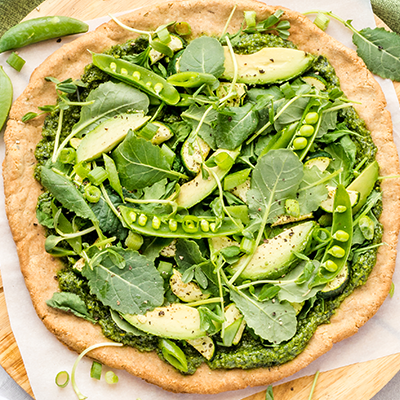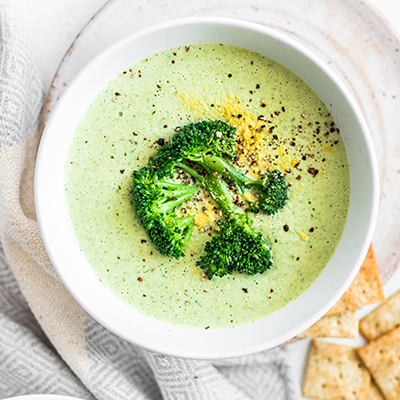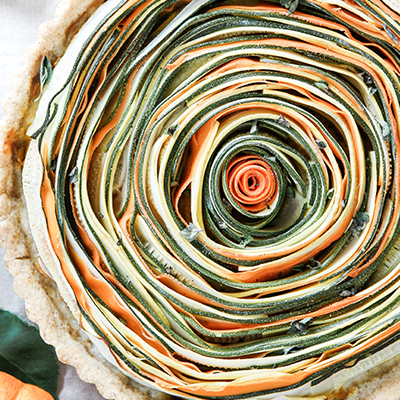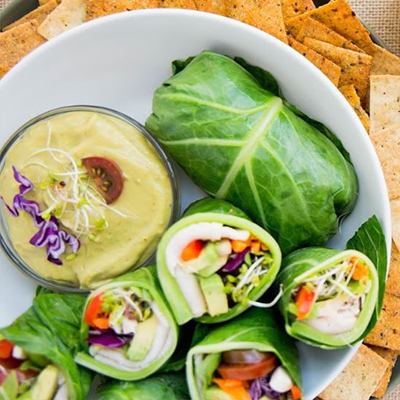We believe food should give your body more of the good stuff, which is why we love leafy green vegetables. In addition to being the most nutrient-dense food category, plants deliver all kinds of vitamins, minerals and phytonutrients. Although everybody and every body is different, it’s safe to say we could all afford to add a little more greens to our daily meals. Here are someof our favorite leafy green vegetables and how you can enjoy them.

Spinach
Spinach can be enjoyed raw or cooked and is a great green to add to any meal no matter what the time of day. Add spinach to your morning eggs, enjoy a spinach salad at lunch, or use it as a pizza topping at dinner time.

Kale
Kale is - surprise! - a member of the cabbage family. Kale can be particularly cumbersome for some digestive systems, so if raw veggies aren’t your favorite, try roasting them with a sprinkle of nutritional yeast and enjoy a homemade batch of roasted kale chips.

Broccoli Rabe
Broccoli Rabe or Rapini, is a green cruciferous vegetable that resembles broccoli. Broccoli Rabe buds, leaves and stems are all edible and can be enjoyed blanched, grilled, roasted or sauteed. A common (and easy!) preparation for broccoli rabe includes boiling in salted water then sauteing it in olive oil with a pinch of fresh garlic and a light sprinkling of pepper flakes.

Herbs
Herbs are both leafy and green, which earned them a spot on this list. Here are some popular herb selections, plus some fun facts on each:
Basil: Basil can be used fresh or dried and is most commonly used in Italian recipes. Perfecting your spaghetti squash recipe? Try adding a pinch of basil. It may be the missing ingredient you’ve needed.
Chives: Chives are mostly used as garnish and have a mild yet slightly pungent flavor. Flowers forming on chive plants are also edible.
Cilantro: The seeds of the cilantro plant are also known as another spice, coriander.
Dill: Dill can grow up to 16-24 inches tall, so be sure to harvest it frequently to avoid it overtaking your backyard garden.
Fennel: Though the leaves and foliage of the fennel plant is most commonly eaten, the entire plant, including the white bulb, is also edible.
Garlic: Although garlic is tasty on its own, you can also use it to keep pests off of your homegrown herbs. Simply mix crushed garlic with water and lightly spray your plants to keep the pests at bay.
Lavender: Lavender pairs well with chocolate, so if you are making a mug of homemade hot cocoa, try infusing it with some fresh lavender for a soothing cup of cocoa.
Lemon Grass: If you plan on growing lemon grass this season, you can also enjoy less mosquitos and more honey bees. That’s right, lemon grass is a natural repellent of mosquitoes and an attractor of honey bees.
Mint: Although mint can be used either fresh or dried, fresh mint is preferred in most recipes as it will provide a crisper taste.
Parsley: Italian flat leaf parsley holds up better to cooking and therefore is usually the type of parsley preferred for cooking hot dishes.
Oregano: Oregano means “Joy of The Mountain” in Ancient Greek. Ancient Greeks once believed that cows that spent their days grazing in oregano fields had tastier meat.
Rosemary: Rosemary is a member of the mint family and was once used to disinfect rooms by burning dried rosemary leaves.
Sage: Sage has many names and is also referred to as common sage, culinary sage, garden sage and true sage.
Tarragon: French tarragon is the variety of tarragon most often used in cooking.
Thyme: Thyme is one of the most versatile herbs and can be used in almost dish, but pairs perfectly with root vegetables.

Swiss Chard
Swiss Chard are dark leafy greens that have stalks that resemble celery stalks. However, Swiss chard stalks can vary in color and can include green, orange, pink, red, yellow or even rainbow colored.

Mustard Greens
Mustard greens are the most pungent of the cooking greens and give a peppery flavor to foods. Mustard greens are available October through early spring. To tame the bitter taste of mustard greens, lightly saute them in your choice of fat like avocado oil or extra virgin olive oil, then sprinkle with sea salt.

Watercrest
Another member of the mustard family, watercrest are small, crispy vegetables that deliver a bite. Watercrest can be enjoyed in salads or cooked and can be incorporated into almost any recipe for a little extra something.